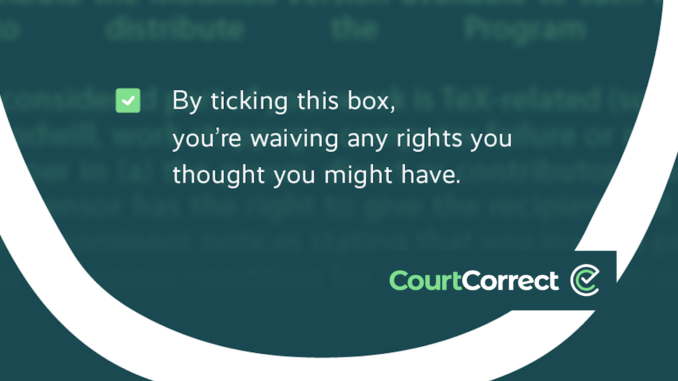
Meet CourtCorrect a new startup that wants to help people to know what rights they’ve signed away when they tick that ‘I agree’ box online – and to then keep track of what is really provided to you by that contract. Ultimately it’s a kind of legal design-based contract correction tool that makes agreements appear as they should have been in the first place, i.e. clear and easy to understand, with all the hidden obligations made visible.
It provides a Chrome extension to help people see what’s in contracts on the internet, and also has a user-friendly contract repository with a handy dashboard, so you can keep track of things.
So, they help consumers, but they also work directly with companies to help them to create improved contract visualisations.
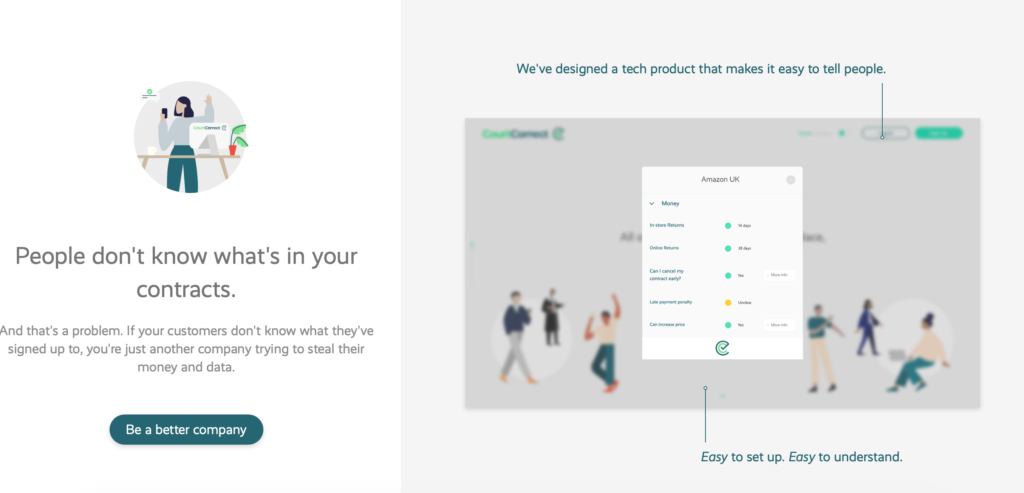
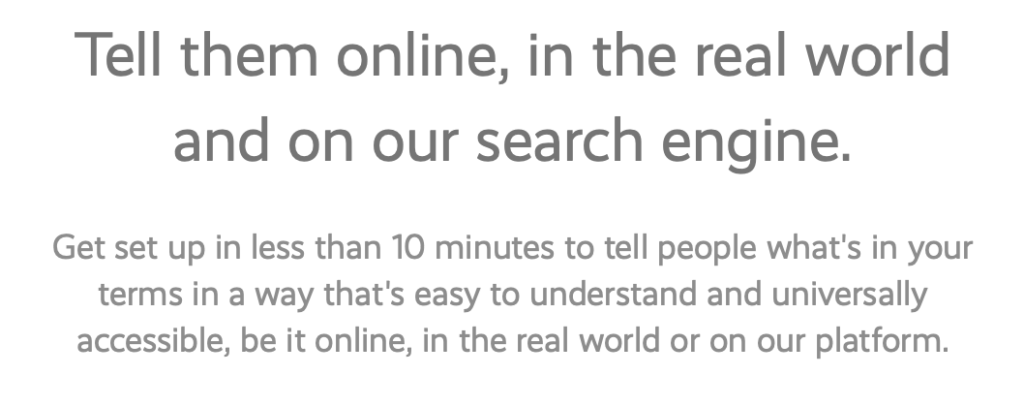
And here is a short video that explains how a company can work with CourtCorrect to make better designed contracts, with the option of using the startup’s own templates for showing key contractual information.
Its founder is Ludwig Bull, who was part of the team of Cambridge students that created LawBot back in 2017. Several other legal tech startups have since followed, most recently the dispute outcome prediction company, CourtQuant, which he left about a year ago.
Now, here is CourtCorrect, which Bull told Artificial Lawyer already has some seed funding and that it’s been a ‘fast journey’ ever since. All good, so what does it do?
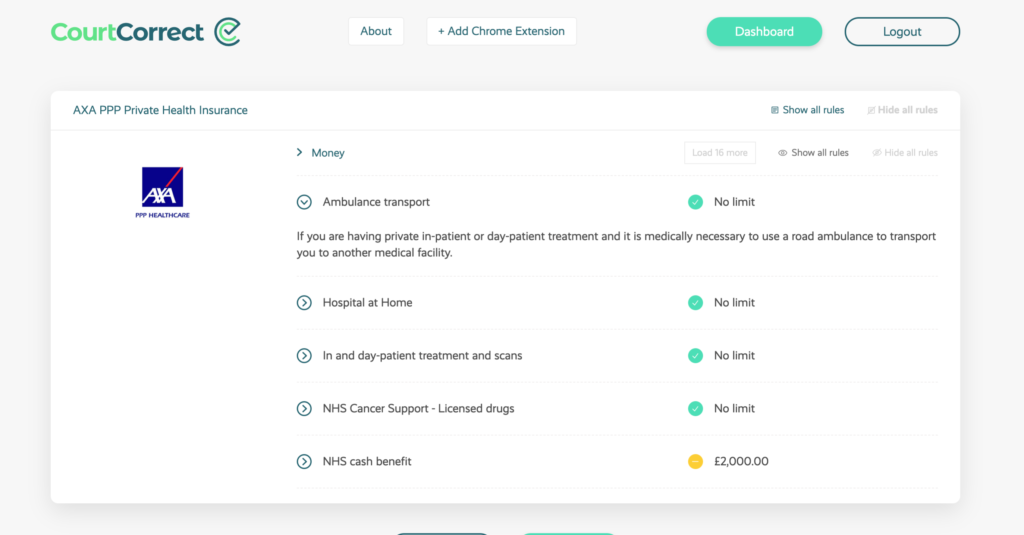
As you can see, the basic gist of this is that their tech and design approach makes wordy contracts that are unreadable (at least for most of us) into summarised versions that highlight the key aspects, re. what you’re getting, and what your obligations are. In short, it’s a kind of legal design-based contract correction tool, one might say, that turns mountains of legalese into simple, clear, readable English.
And below is another one, this time for Amazon.
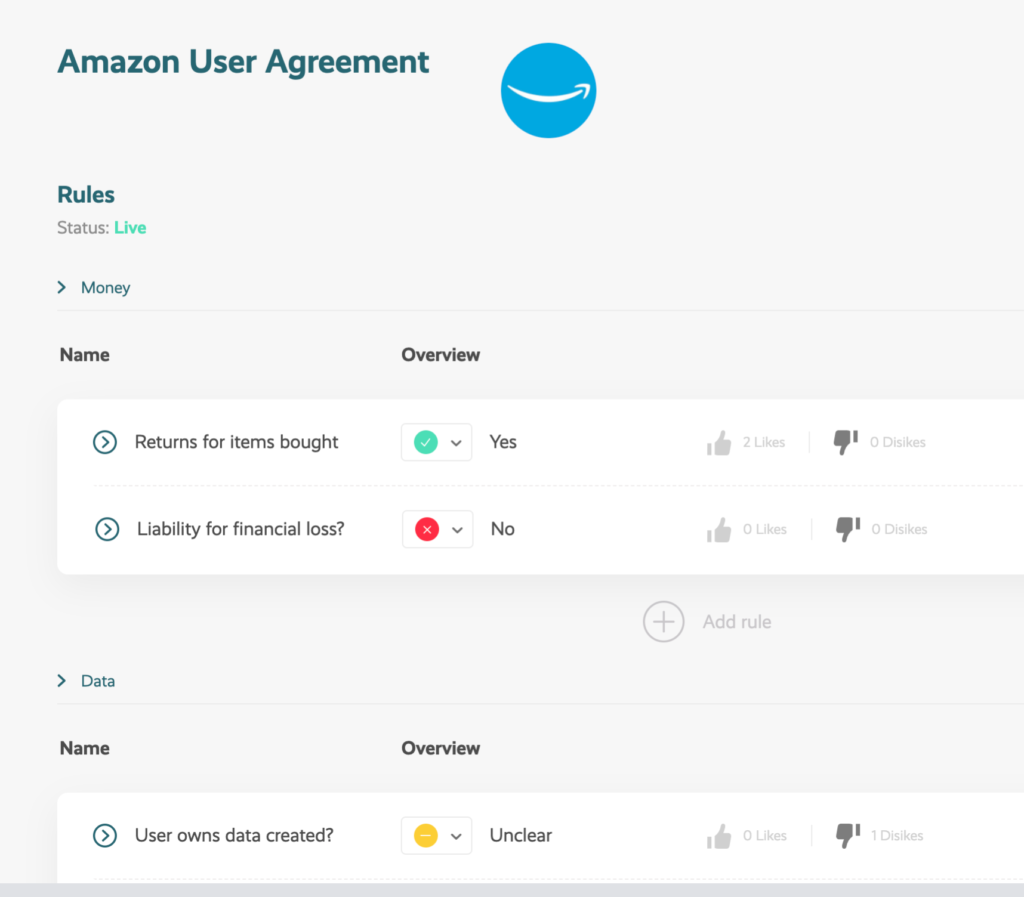
Again, the basics are shown very simply, but can be clicked on to know more. It also shows that the contract is live, and also has additional aspects such as who owns any data created.
There’s plenty more where that came from and Artificial Lawyer has to say it’s a great idea because it meets a very real and clear need, yet doesn’t make people’s lives more complicated in trying to solve the problem – which can so often happen with tech solutions.
Any road, this site interviewed Bull at length, and here is what he said:
Q: Why did you start CourtCorrect?
We started CourtCorrect to collect the world’s legal information, make it easy to understand and universally accessible, to empower people to use their rights.
All around the world people don’t know enough about the law to act as emancipated participants in the legal system, even though it affects them every day. Contracts are an example of this: people sign dozens, if not hundreds of contracts during their lives without knowing what’s in them.
Many of these, like insurance, employment, rental and mortgage contracts are extremely important, yet people often do not fully understand what their rights are.
We started CourtCorrect to change that. We assembled an amazing team of engineers, lawyers and designers, found investors who believe in our mission, and started building it!

Q: What are CourtCorrect’s key tech attributes?
CourtCorrect is digital infrastructure built on robust software architecture, great design and an AI core. We operate a search engine where people can look up simple summaries and original copies of consumer contracts for any company or industry for free.
You can even compare these using filters, allowing people to ask questions like: ‘Show me all social media companies that do not share my personal data‘, or ‘Show me all gym contracts that don’t have late payment penalties‘. People use CourtCorrect to save money, protect their data and live well.
They can save these contracts to their CourtCorrect accounts on our free platform which works like a digital folder with all your contracts in it. We also operate a Chrome browser extension, which delivers this information while users browse the web and automatically adds any contracts you sign online to your account. We’ve also just launched C4 – it’s explosive – which allows companies to integrate their physical premises and documents with our technology by placing custom QR codes in their stores, offices or on printed contracts.
Finally, we’ve built a crawler that automatically collects consumer contracts from companies’ websites and uses AI to extract key information, which is edited and reviewed by an internal team before being published on our platform.
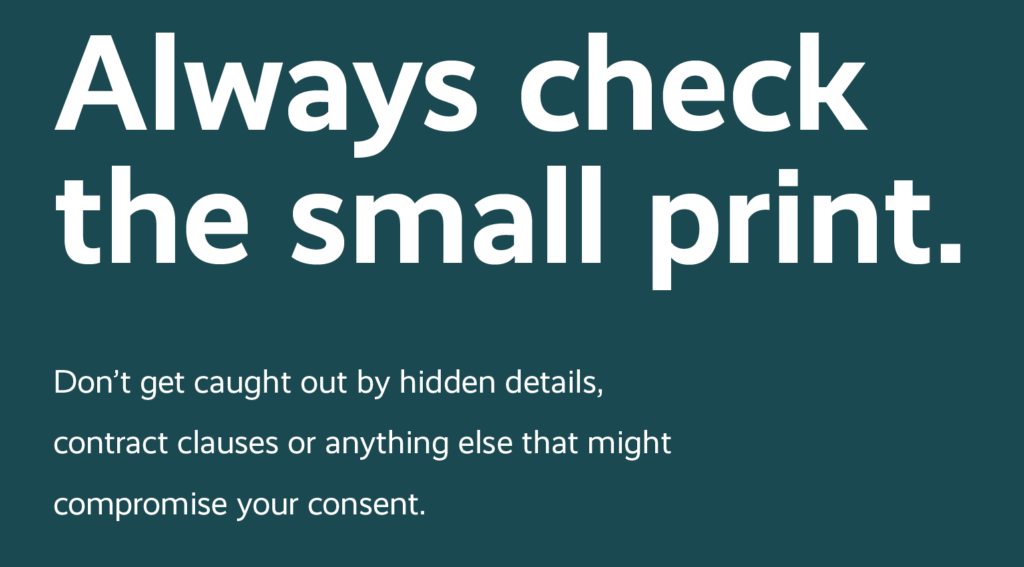
Q: What development stage are you at now?
All of our products are live, most are free and you can access them online right now. We’re seeing exponential growth on both the consumer and business sides of our product. We’re scaling up the business in the UK and are starting to branch out to other countries.
It’s an incredibly exciting time for CourtCorrect, as we can see how our technology is emancipating people to become active participants in the legal system. The whole team is working very hard to deliver on our mission and to make our users and customers happy.
Q: Are you working with law firms / other entities in relation to CourtCorrect?
We make it easy for businesses to explain their terms to their customers. They buy our product to be transparent with customers when they’re interacting with them online, in the physical world and on CourtCorrect. Being transparent increases customer trust, customer retention and purchase intentions and really distinguishes a business from their competitors. It’s also just good for the world.
We work with many businesses of all sizes, and we don’t know all of them personally because any business can come to our site, create an account and get started. It really ranges from your hairdresser down the road to a multinational corporate. Some of the bigger companies we work with directly are in insurance, rental and employment, as these are sectors where consumer contracts matter the most.
While it’s great that a number of larger corporates want us to help them be transparent, we’re also very excited about the smaller businesses coming to our site, as especially in these challenging times we want to help companies of all sizes improve their relationships with their customers and differentiate themselves from their competitors.
Q: More broadly, you’ve had an incredible journey since Cambridge. I think this is the fifth company you’ve created since then. What do put your creativity and regular reinvention down to – I.e. what’s driving this flow of ideas?
A lot of tech companies in this sector want to make the system more efficient. I’ve always wanted to do more. My goal has always been to fundamentally reimagine how the legal system should operate from the ground up. Many of the projects I had the enormous fortune of working on previously were getting there, but I think none had quite the same ambition as CourtCorrect.
With CourtCorrect, we’ve got an amazing team, great investors, an important mission and a vibrant and active community, so we’re all looking forward to continuing our journey at the company over the next years. That being said, I’m still actively involved in some of the things that have come out of previous work (although most of the things you allude to were projects I undertook while a student, not actual companies).
I’m always chatting to law firms and litigation funders about their AI and data strategies and I’m still doing research – most recently as a participant in a UK Research and Innovation funded program focusing on AI in dispute resolution.
Congrats on the new company, Ludwig. Good luck!
P.S. as one very observant reader has just pointed out…..CourtCorrect’s own Terms & Conditions at the bottom of their website could also use some of this simplification treatment. Ludwig, one for you and the team to get to work on..?
Update: Ludwig just got back to say there is a place where the Ts & Cs are given the same treatment – he says: ‘CourtCorrect’s own Ts and Cs are displayed in our own format on our search engine, our chrome extension and also are displayed when you click on the sign-up button.’
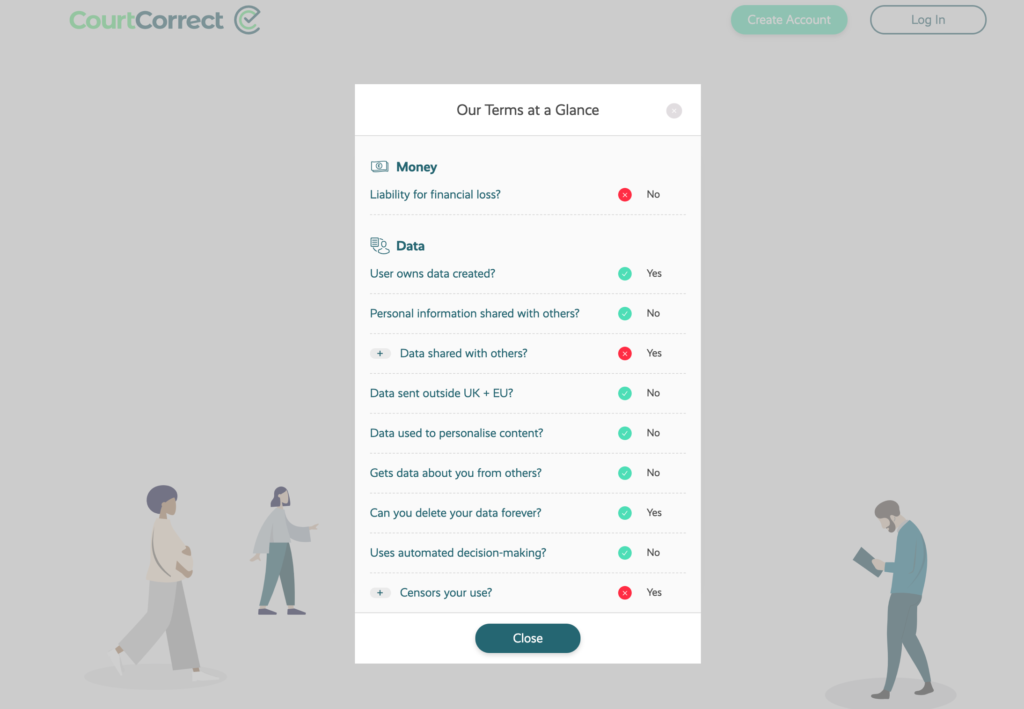
1 Trackback / Pingback
Comments are closed.